BA: Fortress Budapest Reviewed and Spoiled
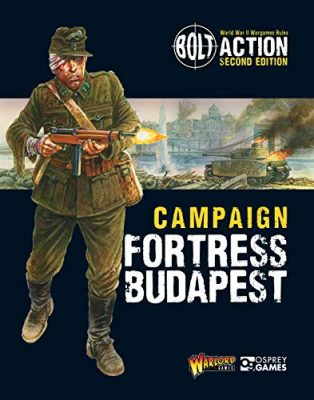 By Troy A. Hill
By Troy A. Hill
Images courtesy of and ©Osprey Publishing Ltd, Warlord Games 2019
I have to admit that I had only a casual sideline historical interest in Europe’s eastern front in WWII. To me, Hungarians and Romanians were always the armies of minor nations that gave the Germans some “cheaper” allies to play in campaigns or tournaments depending on which game system I was playing. How wrong I was.
Thanks to taking the challenge of reading and reviewing new Fortress Budapest Campaign book for Bolt Action, I have a new appreciation of just how important this section of the late war period was to Hitler’s war machine, and why he and Stalin invested so much time, blood and resources into battles that lead the Red Army to conquer Hungary.
Following the liberation of Stalingrad, Stalin’s Red Army began the westward push that would eventually lead them through the gates of Berlin. But there was a sector to the northwest that was of vital importance to ending the war. Romania and Hungary were both allied with the Third Reich in the war. Stalin sent his forces to remedy that situation, and the two sides collided and fought battles that rivaled both Stalingrad and the Ardennes offensive in their ferocity and impact.

Hungary provided both metals, including components for tin, as well as oil for Germany. The oilfields in Hungary quickly became German’s last and only supply of fuel for the Panzers, planes and other vehicles in Hitler’s war machine.
The Soviets quickly overran Romania, who switched allegiances and marched with the Red Army. This is why Romanian forces in our tabletop games can be “swing” armies between Red and Blue sides in tournaments and events. They, like the Italians, fought for both the Axis and the Allies depending on how late in the war the event is placed.
Hungary, and its capital of Budapest, however, where the four forces of Soviets and Romanians took on the Germans and the Hungarians for one of the bloodiest conflicts of the Eastern front if not all of WWII. Fortress Budapest gives Bolt Action players the historical background, as well as new forces and scenarios to game in this theatre with a greater understanding of the importance of these battles.
The Book
Hungarian and Romanian lists originally appear in the Bolt Action: Armies of Italy and the Axis book. This book expands those lists.
Written by Bryan Cook, with support from the Warlord Team, the Fortress Budapest campaign book continues Warlord’s second edition format of campaign books. The meaty main section of the book present a historical overview of the Hungarian campaign, and several major battles.
 Cook and his team assembled this section so as to highlight a wide variety of scenarios for the Bolt Action gamer. These range from the typical infantry skirmishes, as well as tank forces moving toward Budapest across the Hungarian countryside, and culminate in street fighting in the Seige of Budapest. Several scenarios set in the besieged city lead to new rules for street fighting.
Cook and his team assembled this section so as to highlight a wide variety of scenarios for the Bolt Action gamer. These range from the typical infantry skirmishes, as well as tank forces moving toward Budapest across the Hungarian countryside, and culminate in street fighting in the Seige of Budapest. Several scenarios set in the besieged city lead to new rules for street fighting.
The later sections of the book move into additional forces for the German and Soviet forces that were primarily unique to this sector. Forces for Hungary and Romania are, of course, included. Forces selectors (the “army lists” from which Bolt Action players build their forces) for the various factions are included.
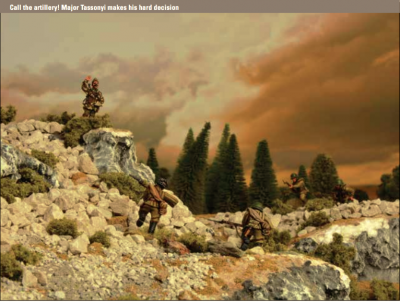 Finally, new special rules for city battlefields are detailed, as well as reprinting essential rules detailed in other supplements (eg: rules for minefields).
Finally, new special rules for city battlefields are detailed, as well as reprinting essential rules detailed in other supplements (eg: rules for minefields).
Almost Allied
Hungary almost followed Romania over to the Allied side. Admiral Horthy, Regent of Hungary, had begun secret negotiations with Stalin to leave the alliance with Germany and make peace with the Soviets. Horthy took to Radio to announce the switch and declare the war in Hungary over.
But Horthy hadn’t counted on the presence of Otto Skorzeny and the execution of Operation Panzerfaust by SS commandos. The Germans fought to capture the son of Horthy, Miklos Horthy Jr., in a sub-operation dubbed “Mickey Maus.”
This created a conflict in Horthy, that was combined with the Fallschirmjager commandos and the Schwere Panzerabteilund 503’s seizure of the Hungarian Royal Palace along with other government buildings, kept the Hungarian forces aligned with German.
Stalin’s reprisal was swift, with orders to the 2nd and 4th Ukranian fronts that Soviets were to treat the Hungarian forces as they did the German forces. The war in Hungary raged on for another eight months.
Scenarios
These come in a wide variety of flavors due to the nature of how extensive this campaign was. Beginning in the Ojitozi Pass of Transylvania, they culminate in the taking of the twin cities of Buda and Pest that make up the Hungarian capital.
Several of the highlights here include the third scenario, Operation Debrecen.
Debrecen: The maneuvering of the armored forces in the countryside after Hungary’s almost-switch to the allies, culminated in actions around Debrecen. The scenario for this section uses the Tank Wars rules and allows forces from the Tank Forces army selector. The forces of Soviet General Plyiev’s Mechanized Cav and German’s 8th Army, including forces of 23rd and 13th Panzer Divisions, along with Felderrnhalle Panzergernadiers and Gebirgsjagers.
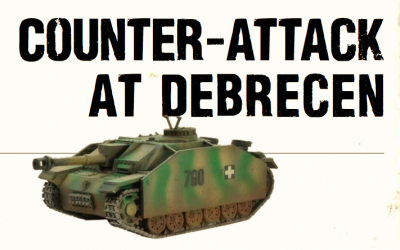 The actual tank battle at Debrecen has been described, according to Fortress Budapest, as “one of the wildest tank battles of the war.” Both sides maneuvering for outflanking positions. Soviet forces are clustered around a central objective in the middle of the table. The German force must place three units on the table, with half their force attempting to flank the Soviets
The actual tank battle at Debrecen has been described, according to Fortress Budapest, as “one of the wildest tank battles of the war.” Both sides maneuvering for outflanking positions. Soviet forces are clustered around a central objective in the middle of the table. The German force must place three units on the table, with half their force attempting to flank the Soviets
The scenario alters the normal outflanking rules, giving whoever controls the center objective control over which table side the German reserves can enter the table. The side is randomized if no player controls the objective.
The Soviet force needs to fight their way out of the trap, while the Germans have to overcome the Soviets in the center to gain control of where their reserves will enter. Overall, I love the idea of this mission, and the chaos of the battlefield it imparts. Once I build out my German tank forces, I’ll want to find a Soviet opponent to play it with.
Fortress Budapest gives players 16 new scenarios to play, ranging from tank and infantry battles in the countryside, up to city fighting in the siege of Buda and Pest. The scenarios even include a battle in the Farkasreti Cemetary and skirmishes to capture supply objectives dropped into the German and Hungarian forces defending Budapest during the siege.
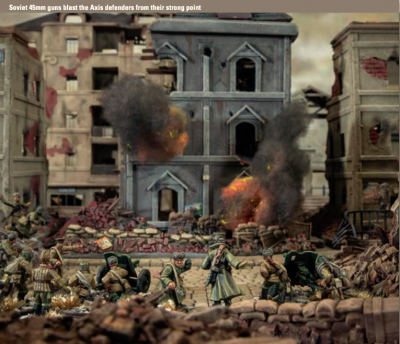 Special Rules
Special Rules
Second only to Stalingrad, the siege of Budapest brings city and street fighting to Bolt Action.
In addition to the normal building combat rules in the main rule book, Fortress Budapest gives City Fighting special rules. I don’t believe these have been published previously
Movement in rubble is now expanded for tracked vehicles, with a chart. Modifiers for Heavy, Super-heavy, light or medium tanks, as well as crew experience level apply. Results range from crash, to bellied out, slipped or “crunch” where the vehicle moves without incident.
Shooting in Rubble is treated in a similar fashion. Troops moving in a ruble area are now more easy to hit than troops who are merely firing or keeping their heads low with a down order.
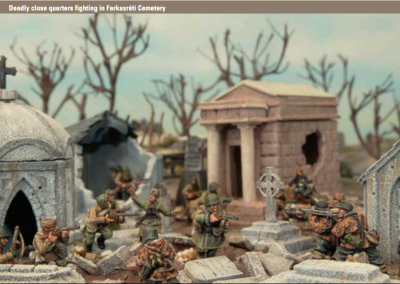 Additional rules for damaging troops or soft-skinned vehicles that are in city fights due to hard surfaces reflecting blast waves and shrapnel. This is limited to only adding a single pin in such cases. Sewer movement is also detailed as a means of outflanking to points on the table instead of coming in from the table edge. FUBAR results apply to the order test in a way that makes the hopelessly lost, or killed due to suffocation or triggering a trap.
Additional rules for damaging troops or soft-skinned vehicles that are in city fights due to hard surfaces reflecting blast waves and shrapnel. This is limited to only adding a single pin in such cases. Sewer movement is also detailed as a means of outflanking to points on the table instead of coming in from the table edge. FUBAR results apply to the order test in a way that makes the hopelessly lost, or killed due to suffocation or triggering a trap.
New Troops
Other articles will appear soon on NDNG to cover the additional troops and force selectors in Fortress Budapest.
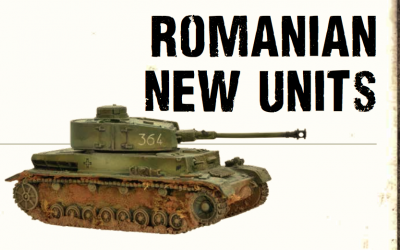 Romanians get Combat Pioneers and Mountain Division infantry, as well as the TACAM R-2 Tank Destroyer.
Romanians get Combat Pioneers and Mountain Division infantry, as well as the TACAM R-2 Tank Destroyer.
Soviets add a Mounted Recon squad. Typically in either a lend-lease M3 scout car, a half-track, or a universal carrier, this squad can boast an LMG and a flamethrower if players spend the points.
Soviet players also gain the option to add a Buda Volunteer section made up of volunteers from the Hungarians captured by the Red Army. Faced with heading to the Gulags, or fighting to liberate their country from the Third Reich, these men chose to stay and fight.
Lend-lease M4A2 75mm Shermans, M4 76mm Shermans, and M3 White Scout Cars are also detailed for the Soviet forces.
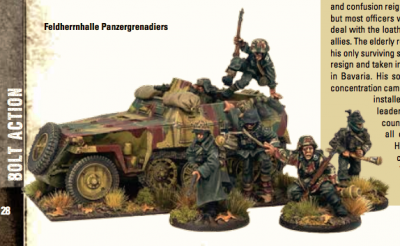 New units for the German forces include the 8th SS Cav, 22nd SS Cav Div squad, Late War Replacement Squad, Panzer Grenadier Squad, and the SS-Panzer Pioneer Squad. They also gain the Polizei M15/42 Tank.
New units for the German forces include the 8th SS Cav, 22nd SS Cav Div squad, Late War Replacement Squad, Panzer Grenadier Squad, and the SS-Panzer Pioneer Squad. They also gain the Polizei M15/42 Tank.
Hungarians gain the most units. Look for a full report coming soon from NDNG. The highlights of the new forces include Arrow Cross Militia, Assault Pioneers, Border Guards and Gendarmerie sections. New artillery includes the 43M Sorozatveto mortar, 44M Buzoganyveto Rocket Launcher and 80mm 29/38M Heavy AA Gun.
Of course, the Hetzer makes its appearance in the list, as does the Panther, along with the Hungarian 43M Zriny II assault gun.
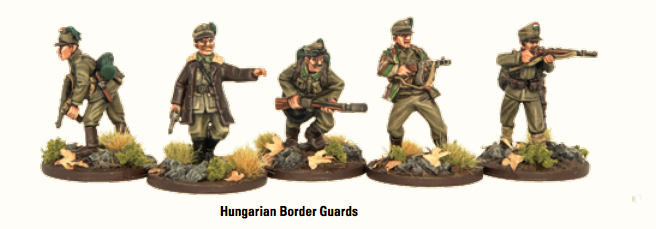 Overall Rating
Overall Rating
Since I’m fairly new to playing and collecting Bolt Action, I’ve noticed the major differences in the newer designs of the campaign books produced under the 2nd Edition rules. Relocating the new units and force selectors to sections in the back of the books makes for easy reference, over the earlier designed campaign books.
The organization of the newer campaign books is much improved over the early books. I enjoy reading through the historical section, interspersed with new mission scenarios. Building a campaign, or even a themed event for group play.
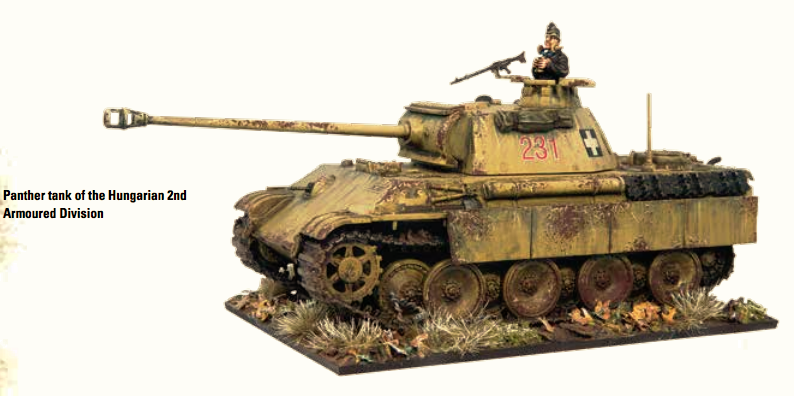
While I haven’t played, nor faced the Hungarian nor Romanian forces (yet) in Bolt Action, this book gives expanded options for each that are sure to please such generals. I’ve begun building my own German force (DAK for now), and had an Eastern Front/Stalingrad force in mind for the second wave of that. This book is helping me see how to expand that force for later battles as the Germans retreated from the Red Army.
Overall, I’m highly satisfied with the book and recommend it to any Bolt Action player interested in the Eastern front, or battles leading up to the fall of Berlin.
Discuss the new Fortress Budapest book on our
Troy is a long-time wargaming grognard and retired journalist. When he’s not chasing wayward typos on No Dice No Glory, he’s usually trying to bribe his dice to roll fewer ones when they really need 4+. Needless to say, he goes through a ton of dice per year.

Excellent review, thanks.